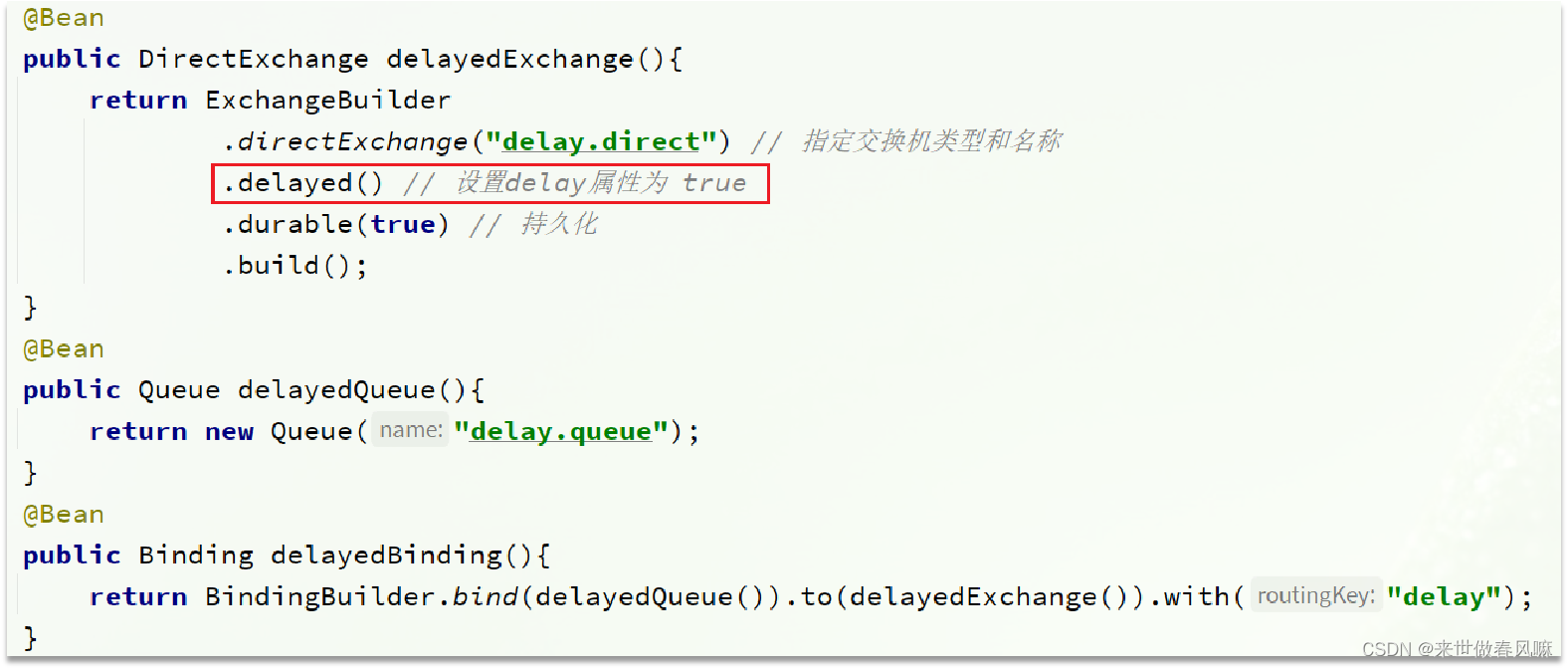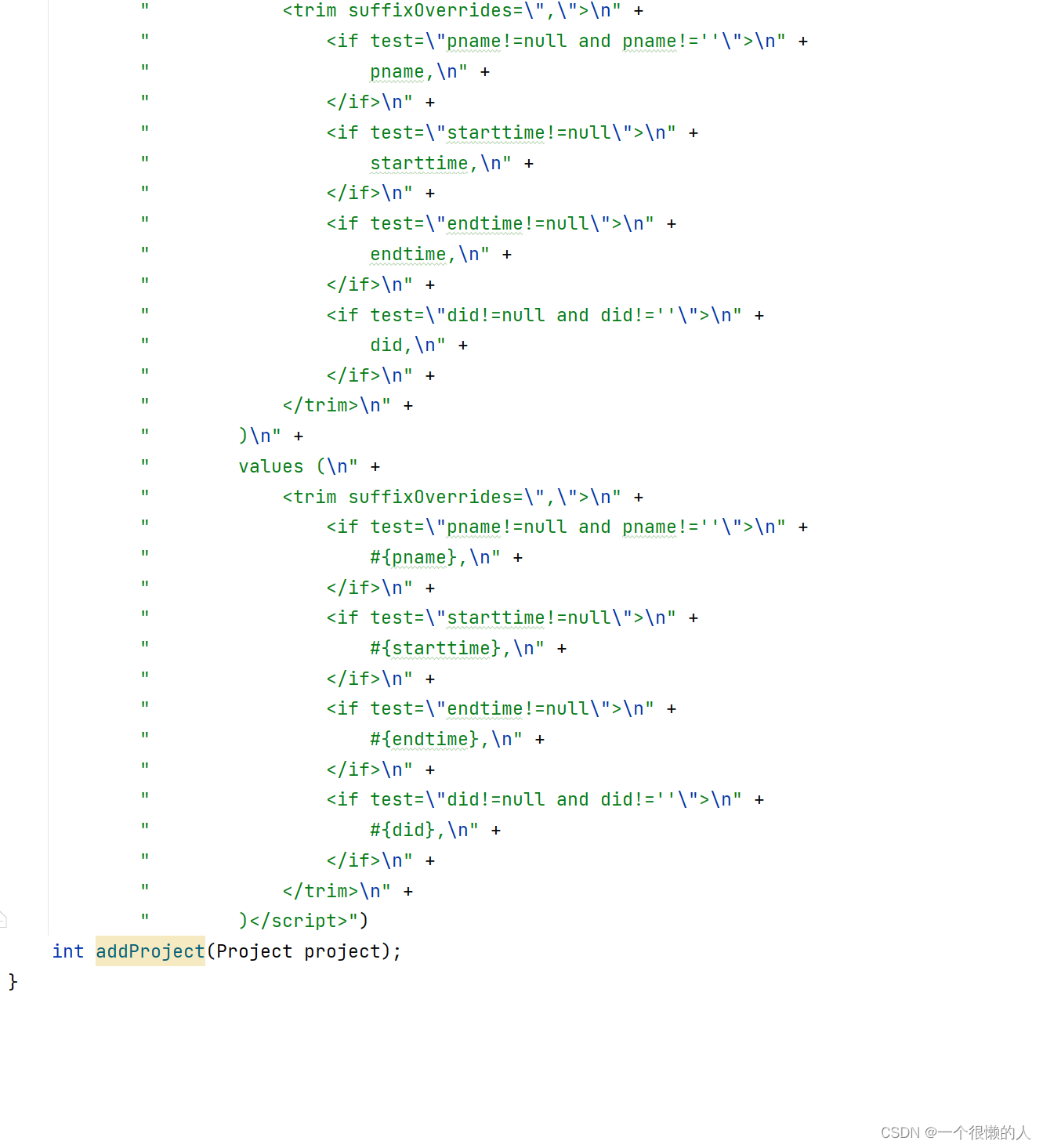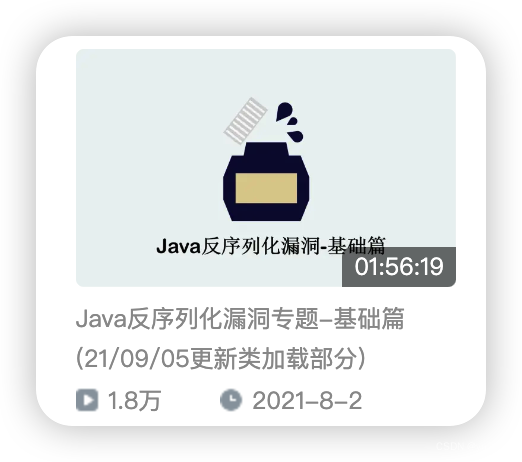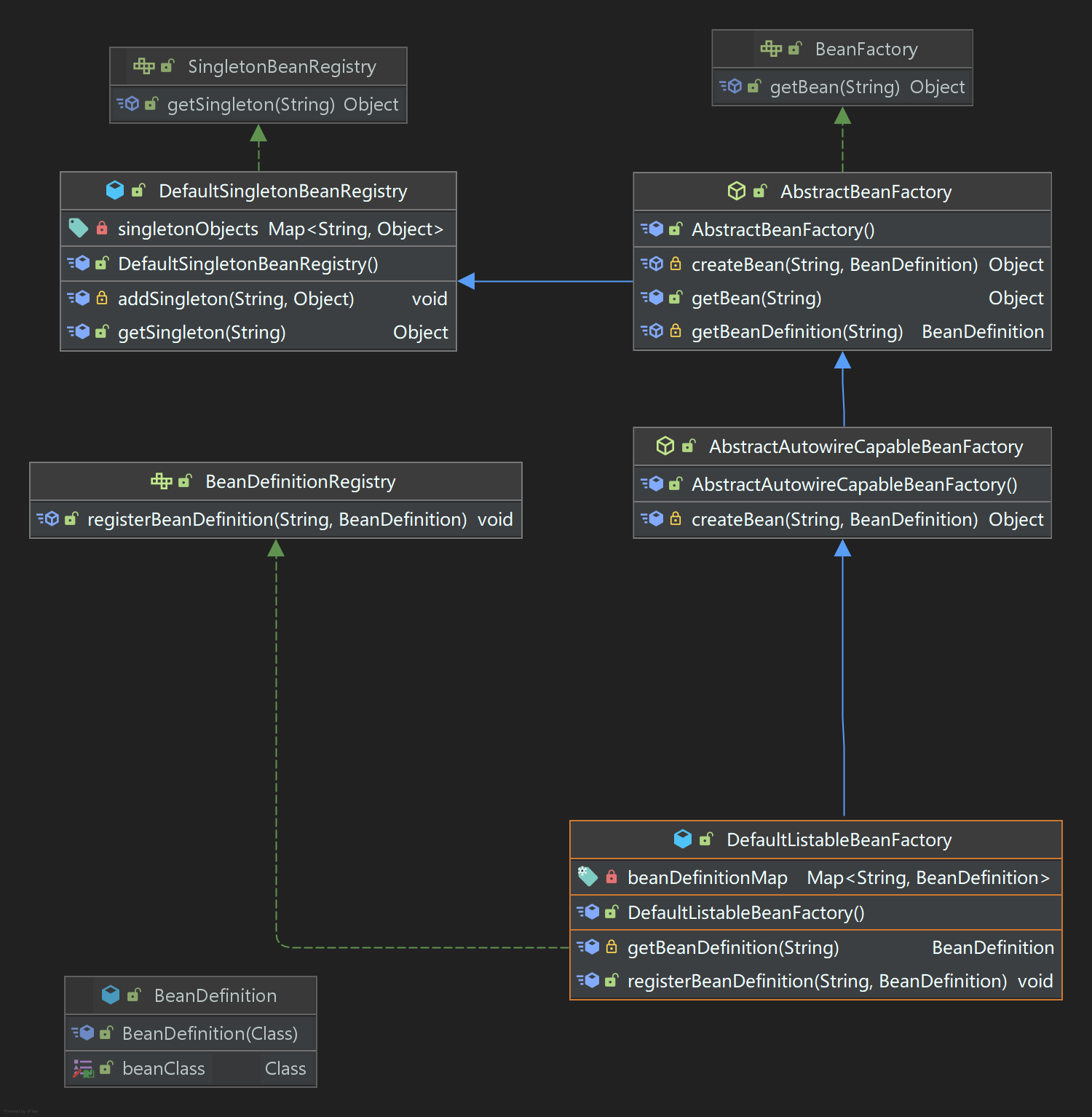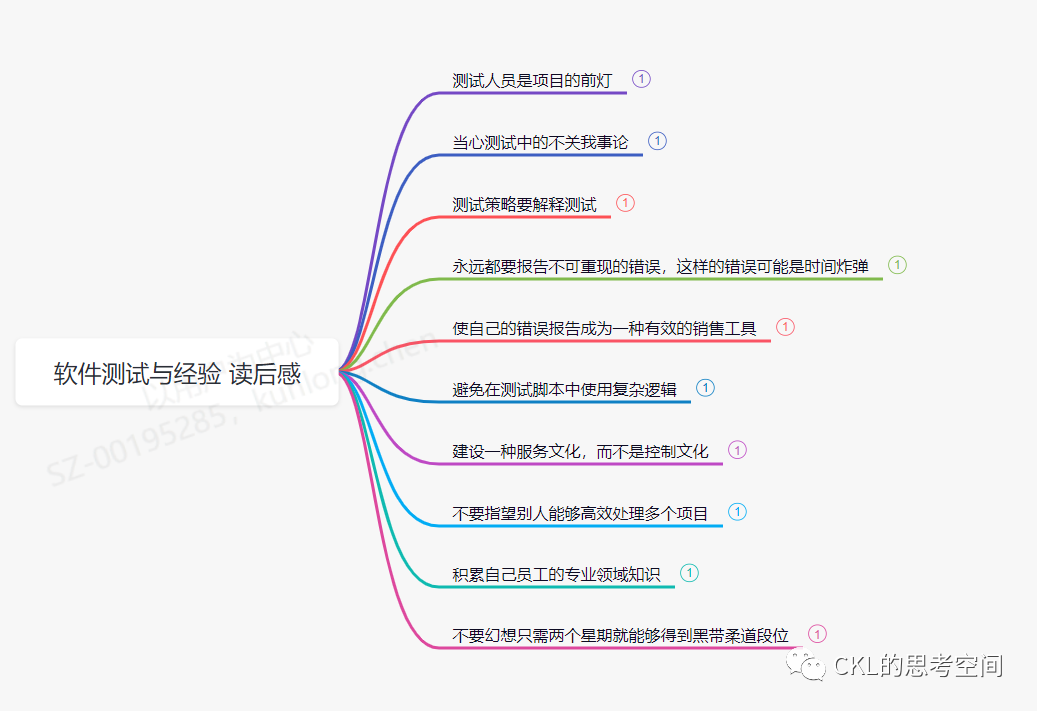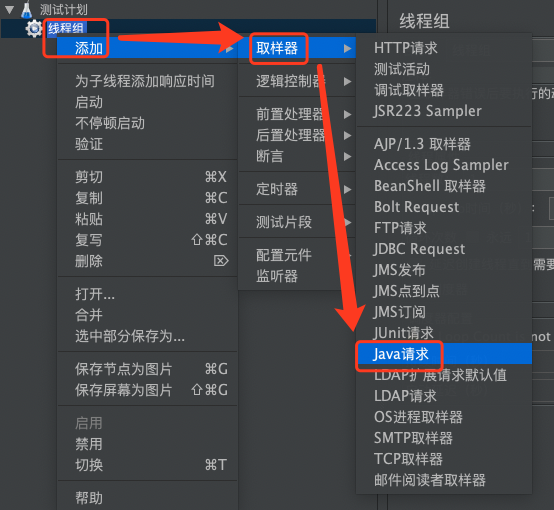一、初识死信交换机(P159)
当一个队列中的消息满足下列情况之一时,可以成为死信(dead letter):
(1)消费者使用basic.reject或 basic.nack声明消费失败,并且消息的requeue参数设置为false
(2)消息是一个过期消息,超时无人消费
(3)要投递的队列消息堆积满了,最早的消息可能成为死信
如果该队列配置了dead-letter-exchange属性,指定了一个交换机,那么队列中的死信就会投递到这个交换机中,而这个交换机称为死信交换机(Dead Letter Exchange,简称DLX)。
二、TTL
TTL,也就是Time-To-Live。如果一个队列中的消息TTL结束仍未消费,则会变为死信,ttl超时分为两种情况:
(1)消息所在的队列设置了存活时间
(2)消息本身设置了存活时间
我们声明一组死信交换机和队列,基于注解方式:
@Slf4j @Component public class SpringRabbitListener { @RabbitListener(bindings = @QueueBinding( value = @Queue(name = "dl.queue", durable = "true"), exchange = @Exchange(name = "dl.direct"), key = "dl" )) public void listenDlQueue(String msg) { log.info("消费者接收到了dl.queue的延迟消息"); } }
要给队列设置超时时间,需要在声明队列时配置 x-message-ttl 属性:
@Configuration public class TTLMessageConfig { @Bean public DirectExchange ttlDirectExchange(){ return new DirectExchange("ttl.direct"); } @Bean public Queue ttlQueue(){ return QueueBuilder .durable("ttl.queue") .ttl(10000) .deadLetterExchange("dl.direct") .deadLetterRoutingKey("dl") .build(); } @Bean public Binding ttlBinding(){ return BindingBuilder.bind(ttlQueue()).to(ttlDirectExchange()).with("ttl"); } }
发送消息时,给消息本身设置超时时间
@Test public void testTTLMessage() { // 1.准备消息 Message message = MessageBuilder .withBody("hello, ttl messsage".getBytes(StandardCharsets.UTF_8)) .setDeliveryMode(MessageDeliveryMode.PERSISTENT) .setExpiration("5000") .build(); // 2.发送消息 rabbitTemplate.convertAndSend("ttl.direct", "ttl", message); // 3.记录日志 log.info("消息已经成功发送!"); }
队列和消息设置 ttl 属性,两者共存时,以时间短的 ttl 为准。
三、延迟队列
利用TTL结合死信交换机,我们实现了消息发出后,消费者延迟收到消息的效果。这种消息模式就称为延迟队列(Delay Queue)模式。
延迟队列的使用场景包括:
(1)延迟发送短信
(2)用户下单,如果用户在15 分钟内未支付,则自动取消
(3)预约工作会议,20分钟后自动通知所有参会人员
因为延迟队列的需求非常多,所以RabbitMQ的官方也推出了一个插件,原生支持延迟队列效果。
1. SpringAMQP使用延迟队列插件
DelayExchange的本质还是官方的三种交换机,只是添加了延迟功能。因此使用时只需要声明一个交换机,交换机的类型可以是任意类型,然后设定delayed属性为true即可。
基于注解方式:
@Slf4j @Component public class SpringRabbitListener { @RabbitListener(bindings = @QueueBinding( value = @Queue(name = "delay.queue", durable = "true"), exchange = @Exchange(name = "delay.direct", delayed = "true"), key = "delay" )) public void listenDelayExchange(String msg) { log.info("消费者接收到了delay.queue的延迟消息"); } }
基于java代码的方式:
然后我们向这个delay为true的交换机中发送消息,一定要给消息添加一个header:x-delay,值为延迟的时间,单位为毫秒:
@Test public void testSendDelayMessage() throws InterruptedException { // 1.准备消息 Message message = MessageBuilder .withBody("hello, ttl messsage".getBytes(StandardCharsets.UTF_8)) .setDeliveryMode(MessageDeliveryMode.PERSISTENT) .setHeader("x-delay", 5000) .build(); // 2.准备CorrelationData CorrelationData correlationData = new CorrelationData(UUID.randomUUID().toString()); // 3.发送消息 rabbitTemplate.convertAndSend("delay.direct", "delay", message, correlationData); log.info("发送消息成功"); }
判断是否是延迟消息。是一个延迟消息,忽略这个错误提示
@Slf4j @Configuration public class CommonConfig implements ApplicationContextAware { @Override public void setApplicationContext(ApplicationContext applicationContext) throws BeansException { // 获取RabbitTemplate对象 RabbitTemplate rabbitTemplate = applicationContext.getBean(RabbitTemplate.class); // 配置ReturnCallback rabbitTemplate.setReturnCallback((message, replyCode, replyText, exchange, routingKey) -> { // 判断是否是延迟消息 Integer receivedDelay = message.getMessageProperties().getReceivedDelay(); if (receivedDelay != null && receivedDelay > 0) { // 是一个延迟消息,忽略这个错误提示 return; } // 记录日志 log.error("消息发送到队列失败,响应码:{}, 失败原因:{}, 交换机: {}, 路由key:{}, 消息: {}", replyCode, replyText, exchange, routingKey, message.toString()); // 如果有需要的话,重发消息 }); } }
延迟队列插件的使用步骤包括哪些?
(1)声明一个交换机,添加delayed属性为true
(2)发送消息时,添加x-delay头,值为超时时间


